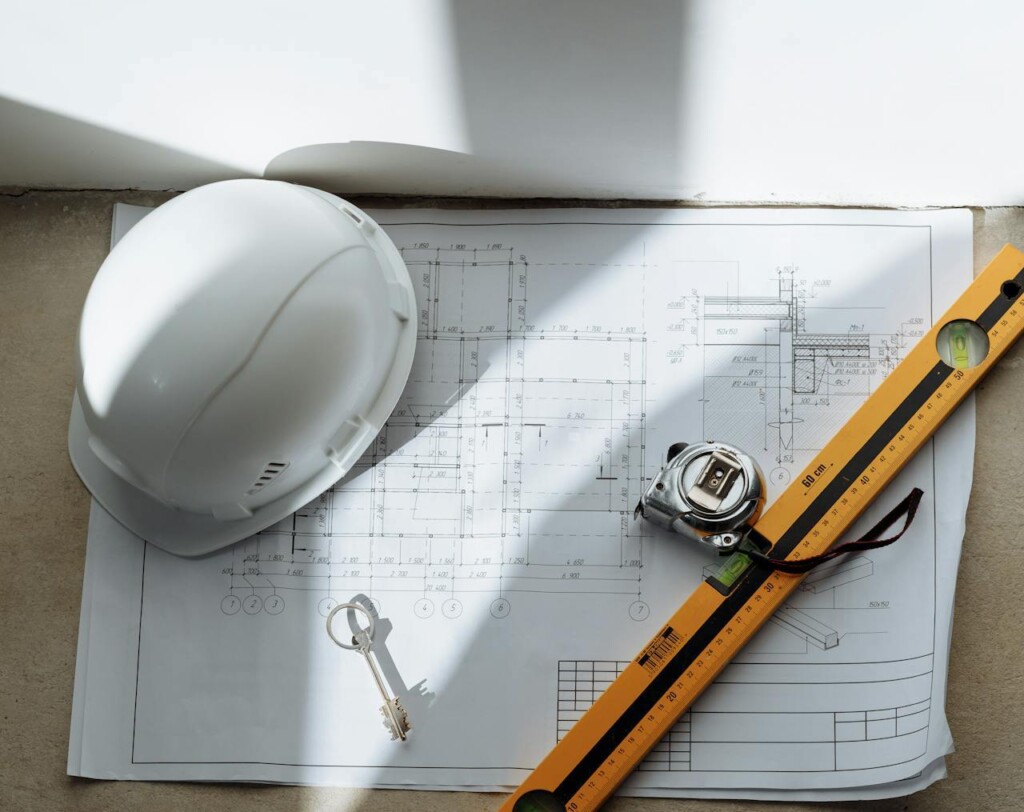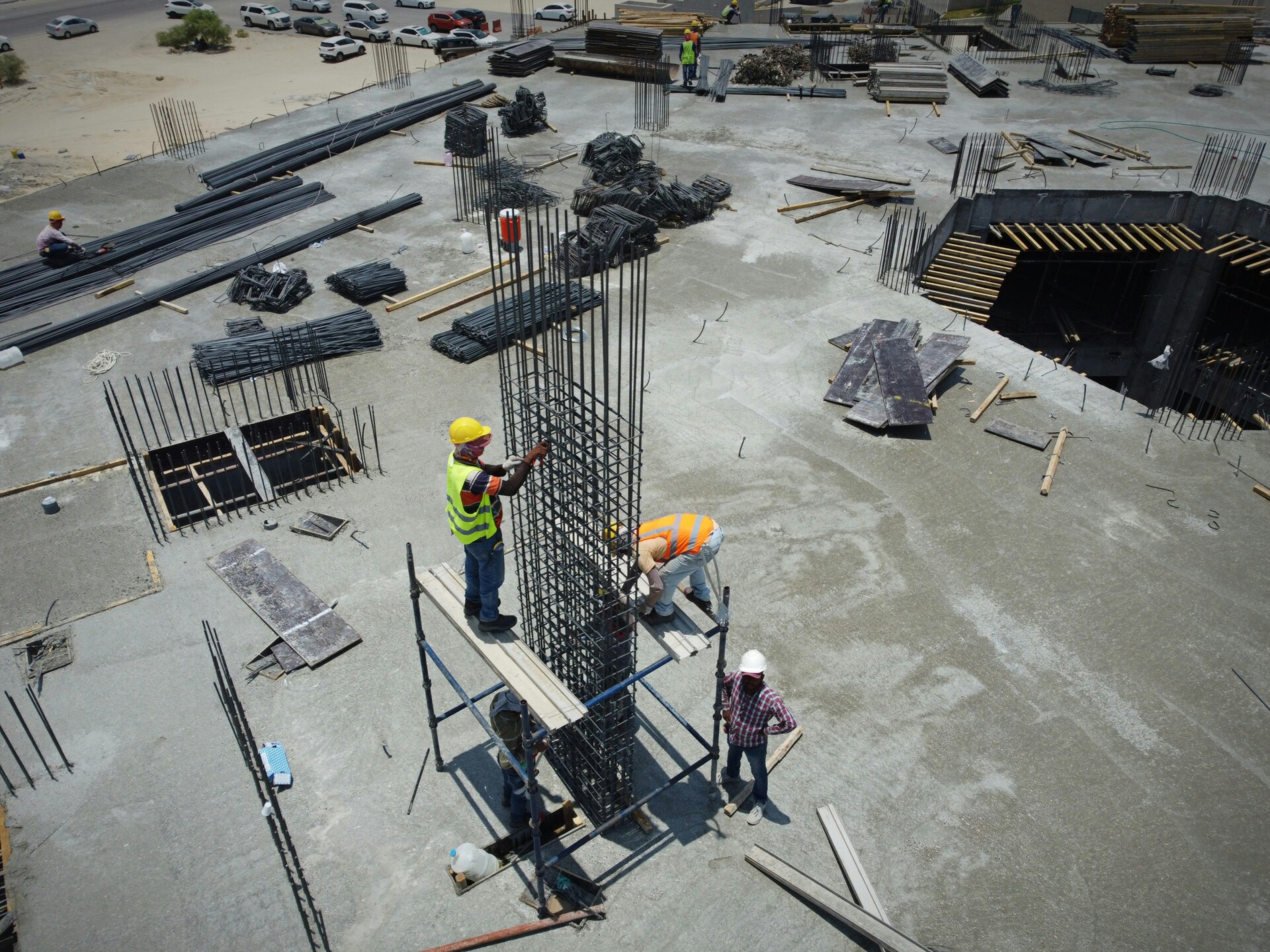Commercial architects deliver up to 40% better operational efficiency when they properly align building systems with business workflows. Their primary role centers on creating functional spaces that drive revenue and support operational goals for developers and property owners.
We work alongside commercial architects who coordinate stakeholders, manage construction documents, and secure permits and approvals to keep projects moving toward budget alignment and timely completion. This comprehensive approach spans everything from sustainable design integration to ensuring buildings meet codes and operational readiness standards across offices, retail, healthcare, and commercial fit-outs.
What Services Do Commercial Architects Provide From Planning To Operations?

Commercial architects deliver four core services that span the full project lifecycle. These range from comprehensive construction documentation to specialized facility assessments that support operations and regulatory compliance.
Architect Of Record (AOR) Services
When we work with an Architect of Record, they become the professional responsible for all construction documents and regulatory submissions. The AOR creates permit-ready construction documents that meet local building codes and development requirements. They navigate the permitting process by securing approvals from municipal authorities, fire departments, and other regulatory bodies.
Beyond basic approvals, modern AOR services include integrating sustainable design elements and clean energy requirements into project specifications. This means incorporating HVAC systems that meet energy efficiency standards, specifying sustainable materials, and ensuring compliance with green building codes. For projects requiring funding support, the AOR prepares grant applications with the technical documentation needed for approval.
The AOR also maintains long-range facilities plans (LRFP) for regulatory agencies. These plans keep facilities aligned with evolving building codes, zoning requirements, and municipal development standards.
Commercial Interior Design
Interior design services focus on creating functional, code-compliant spaces that support business operations. Commercial interior architects handle renovations and new construction for diverse property types including office buildings, retail stores, restaurants, healthcare facilities, and senior living communities.
For commercial fit-out projects, interior design teams coordinate space planning, finishes selection, and systems integration. This includes ensuring proper egress paths, accessibility compliance, and coordination with mechanical systems. Restaurant and bar projects require specialized knowledge of food service codes, ventilation requirements, and health department regulations.
Retail and shopping center interiors demand understanding of traffic flow, security systems, and merchandising requirements. Healthcare and senior living projects involve strict regulatory compliance for patient safety, infection control, and accessibility standards.
Facility Condition Assessment (FCA)
FCA services provide systematic evaluation of existing commercial properties. Assessment teams review building structure, envelope components like walls and roofing, doors and windows, plus all mechanical systems including plumbing, electrical, and HVAC equipment.
These assessments produce compliance audits that identify code violations or safety hazards requiring immediate attention. The evaluation includes regulatory documents that support insurance requirements, financing applications, or property transactions. Cost assessments for repairs and renovations help property owners prioritize capital expenditures and budget for necessary improvements.
FCA reports typically include a Facility Condition Index rating that quantifies overall building condition. This rating helps owners understand whether properties require minor maintenance, major repairs, or complete system replacements.
Facilities Consulting Services
Comprehensive facilities consulting supports projects from initial concept through ongoing operations. This includes preliminary planning and development services that establish project feasibility, site requirements, and regulatory pathways before construction begins.
During active construction, facilities consultants provide oversight of construction phase requirements and regulatory compliance. They manage contractor and vendor coordination, ensuring work progresses according to approved plans and specifications. Post-construction assessment services verify that completed projects meet operational requirements and regulatory standards.
Recent consulting services have expanded to include COVID-19 floor planning and return-to-work coordination. This involves reconfiguring spaces for social distancing, improving ventilation systems, and ensuring compliance with evolving health and safety regulations.
How Do Commercial Architects Handle Code, Permitting, And Compliance?
Commercial architects manage the complex web of regulatory requirements that govern building construction. When we serve as the Architect of Record, we take responsibility for ensuring your project meets all applicable codes while navigating the approval process efficiently.
We develop construction documents specifically designed to meet permitting requirements. These documents must demonstrate compliance with building codes, zoning regulations, and accessibility standards before any construction can begin. The documentation process includes detailed drawings, specifications, and compliance reports that regulatory agencies need to evaluate your project.
Permit Applications And Regulatory Submissions
The permit application process varies by jurisdiction, but architects typically prepare all necessary submissions. We coordinate with local building departments, fire marshals, and planning commissions to ensure applications include required information. This preparation reduces delays and prevents costly resubmissions.
Modern projects often require integration of sustainable design elements and clean energy systems. We incorporate these requirements into the construction documents from the beginning. This approach ensures compliance with environmental regulations and positions projects for available incentives or grants.
Ongoing Compliance And Documentation Support
Facility Condition Assessments provide another layer of compliance management. These evaluations examine existing structures against current code requirements and identify areas needing updates. We conduct systematic audits of building systems, envelope components, and safety features to maintain regulatory compliance.
Regulatory agencies often require updated Long-Range Facilities Plans to track facility conditions and planned improvements. We assist in preparing these submissions, ensuring they reflect current building conditions and future compliance needs. This documentation helps maintain facility eligibility for funding programs and regulatory approvals.
Throughout construction, we monitor compliance with approved plans. Any changes require documentation updates and potential re-approval, which we manage to keep projects moving forward without regulatory issues.
What Should Builders And Owners Ask When Hiring A Commercial Architect?

Selecting the right architect determines your project’s success. Use these research-based questions to evaluate potential partners and document their responses for comparison.
Fee Structure And Budget Management Questions
Start with the financial foundation. Ask how they charge for services—percentage of total project cost, fixed rate, or hourly billing. Commercial projects typically range from 3-12% of total cost, while fixed rates work well for smaller projects with defined scopes.
Budget management requires active partnership. Ask how you’ll work together to stay on budget throughout the project. Request their approach to cost-estimating software and value engineering techniques that optimize functionality while controlling expenses.
Project Management And Communication
Clarify their project management approach early. Ask who serves as your day-to-day point of contact and how they structure communication with owners, contractors, and vendors. Understanding their coordination process prevents confusion during construction phases.
Request details about their challenge identification process. What potential issues do they anticipate on your specific project? How will they communicate these challenges and implement solutions before problems escalate?
Experience And Compliance Capabilities
Review their portfolio for similar commercial projects. Ask for examples that match your project’s scope, size, and commercial use type. An architect experienced in retail design may not suit industrial or healthcare projects effectively.
Verify their compliance experience, especially for complex regulatory requirements. Ask about their familiarity with local permitting processes, zoning laws, and specialty areas like sustainable materials or clean energy integration. Their regulatory relationships can streamline approvals significantly.
Change Management Process
Changes happen during construction. Ask how they handle mid-project changes, documentation updates, and re-approvals. Understanding their change request process, including timeline impacts and redesign charges, prevents surprises later.
Request their approach to design modifications that arise from construction issues, evolving business needs, or regulatory requirements. Their flexibility and communication during changes often determines project success.
How Do Commercial Architects Collaborate With EB3 Construction And Other Stakeholders?
Successful commercial projects depend on systematic coordination between architects, contractors, property owners, and regulatory agencies. We establish clear communication channels and defined roles from project initiation to ensure all parties understand their responsibilities and how decisions flow through the team.
The research emphasizes that effective delivery requires responsiveness, collaboration, outcome focus, and schedule discipline. Architects serve as central coordinators who bridge technical design requirements with practical construction realities. This coordination becomes critical when multiple stakeholders must align their efforts to meet project deadlines and budget constraints.
Construction Oversight And Regulatory Compliance
Architects oversee construction-phase requirements by conducting regular site visits and progress reviews. They verify that field conditions match approved drawings and specifications. When discrepancies arise, architects provide immediate clarification to prevent work delays and ensure quality standards are maintained.
Regulatory compliance management requires ongoing attention throughout construction. Architects coordinate with building officials to schedule inspections at proper intervals. They address code questions that emerge during construction and provide documentation for inspector reviews. This proactive approach prevents compliance issues that could delay project completion or require costly corrections.
We coordinate with environmental agencies when projects trigger stormwater management or other environmental requirements. Architects prepare required documentation and monitor compliance with environmental permits throughout the construction process.
Managing Contractors And Vendors
Architects supervise work progress by monitoring construction schedules and quality control measures. They participate in regular coordination meetings with contractors to address technical questions and resolve conflicts between building systems. This supervision ensures that installation methods align with design specifications and performance requirements.
Vendor management involves coordinating with specialty contractors and equipment suppliers. Architects review shop drawings and product submittals to verify compliance with project specifications. They coordinate delivery schedules with contractors to prevent material delays that could impact construction timelines.
Communication protocols establish clear channels for addressing construction issues. Architects document decisions and changes through formal processes that maintain project records. This systematic approach prevents misunderstandings and provides clear direction for field personnel.
Design Intent Communication And Change Management
Clear communication of design intent prevents field interpretation errors that can compromise project quality. Architects provide detailed drawings and specifications that explain how systems should function together. When questions arise during construction, architects issue clarifications that maintain design integrity while addressing practical construction concerns.
Change management requires systematic evaluation of proposed modifications. Architects assess how changes affect building performance, code compliance, and other project elements. They coordinate with engineers to ensure structural and mechanical impacts are properly addressed before approving modifications.
Document updates maintain accurate project records throughout construction. Architects prepare revised drawings that reflect approved changes and field conditions. These updates ensure that final documentation accurately represents the completed building for future maintenance and renovation work.
Post-Construction Assessment And Operational Readiness
Post-construction assessments verify that building systems operate as designed. Architects coordinate with commissioning agents to test HVAC, electrical, and plumbing systems. They review system performance data to confirm that design goals for energy efficiency and operational functionality are achieved.
Operational readiness involves preparing building owners for facility management responsibilities. Architects provide operation and maintenance manuals that explain system functions and maintenance requirements. They coordinate training sessions that help facility staff understand building operations and preventive maintenance procedures.
Final inspections ensure compliance with all regulatory requirements before occupancy. Architects coordinate with local officials to address any remaining compliance issues. They verify that all permits are properly closed and that required certifications are obtained for building occupancy.
This coordinated approach supports timely completion by preventing delays that occur when stakeholders work in isolation. Early coordination identifies potential conflicts before they impact construction schedules. Clear communication channels ensure that decisions are made quickly and effectively communicated to all team members.
Conclusion And Next Steps

Commercial architects guide projects from planning and permits through interiors, assessments, and operations. They create construction documents, secure approvals, coordinate stakeholders, and ensure compliance while delivering spaces that support business goals. Whether you need an Architect of Record for full building design, interior specialists for fit-outs, or facility condition assessments for existing structures, the right architect becomes a strategic partner in achieving timely, budget-aligned results.
To move forward effectively, define your project scope and specific goals first. Decide which services you need, whether AOR for comprehensive design and permitting, commercial interior design for space planning, facility condition assessments for existing buildings, or facilities consulting for lifecycle support. Prepare the hiring questions covered in this guide to evaluate potential partners thoroughly. Establish clear roles and communication protocols. Finally, plan for regulatory compliance and set realistic timelines that support both construction coordination and operational readiness.
Ready to discuss your commercial project needs with experienced professionals? Contact EB3 Construction to explore how we collaborate with architects to deliver successful commercial builds.




